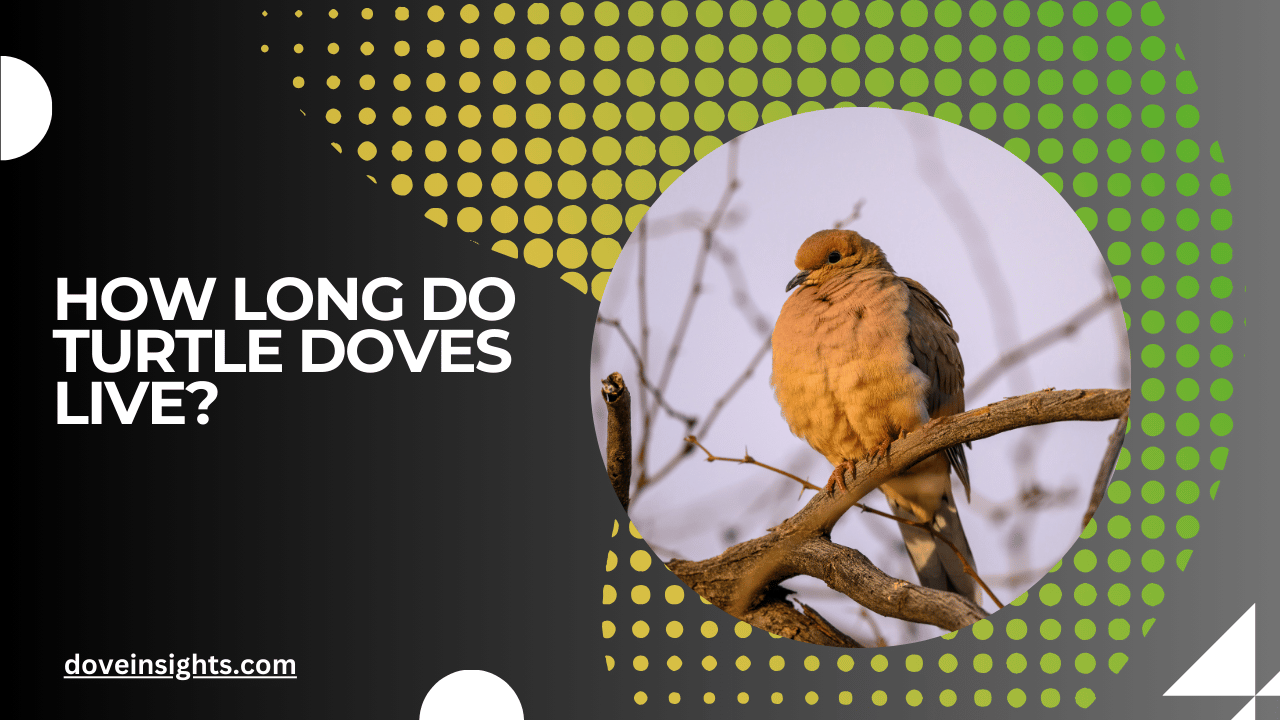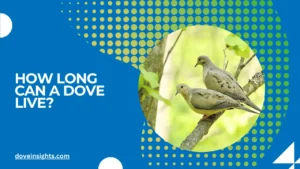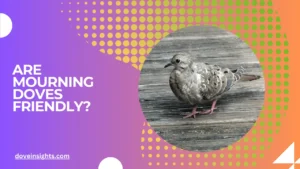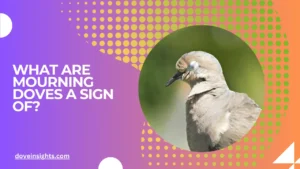Turtle doves, known for their soft, melodic coos and graceful flight, have long been a symbol of peace and love in many cultures.
Their gentle nature and delicate beauty make them captivating creatures to observe. But have you ever wondered how long these elegant birds actually live? The answer may surprise you, as the lifespan of turtle doves can vary significantly based on a range of factors—from environmental conditions to human influence.
As with many animals, understanding the lifespan of turtle doves is not just about knowing how long they live; it is about recognizing the critical factors that influence their survival.
The longevity of these birds is shaped by predation, habitat destruction, food availability, and other ecological pressures. In this article, we will dive deep into the factors that impact their lifespan, the challenges they face, and the measures we can take to help protect them.
From their reproductive patterns to the role of human activity in their survival, understanding the lifespan of turtle doves offers insights into their biology and the importance of conservation efforts.
Whether you’re a birdwatcher, a conservationist, or simply curious about these fascinating creatures, this article will provide you with a comprehensive understanding of how long turtle doves live and why it matters.
Contents
- 1 How Long Do Turtle Doves Live in the Wild?
- 2 Impact of Habitat and Food Availability on Lifespan
- 3 Human Influence on the Lifespan of Turtle Doves
- 4 Predation and Natural Threats to Turtle Doves
- 5 The Role of Conservation in Extending Turtle Dove Lifespan
- 6 Conclusion:
- 7 FAQ’s
- 7.0.1 How long do turtle doves live in the wild?
- 7.0.2 What factors influence the lifespan of turtle doves?
- 7.0.3 Do turtle doves face predation threats?
- 7.0.4 How do human activities impact turtle doves?
- 7.0.5 Can turtle doves live longer in protected areas?
- 7.0.6 How does food availability affect the lifespan of turtle doves?
How Long Do Turtle Doves Live in the Wild?
In the wild, the typical lifespan of a turtle dove is between 1 to 3 years. However, it’s important to note that many of these birds do not live to reach adulthood. High rates of predation, environmental challenges, and disease can shorten their lives significantly.
For those that do survive, their average lifespan tends to extend beyond the average of 1 to 3 years, and they may live up to 5 years or more, depending on their circumstances.
Turtle doves face various natural threats in their environment. Predators such as hawks, falcons, and even larger birds of prey pose a significant threat to young or vulnerable doves. Moreover, the lack of suitable habitat in some areas, as well as extreme weather events, can also contribute to the high mortality rates in their early years.
Yet, for the individuals who survive past their early years, they can enjoy a relatively long life compared to their peers. Their ability to live longer depends on access to safe nesting areas, abundant food sources, and mild weather conditions.
Impact of Habitat and Food Availability on Lifespan
The availability of suitable habitats and food sources plays a crucial role in determining the lifespan of turtle doves.
These birds are typically found in wooded areas, farmlands, and open fields, where they can find the seeds, grains, and berries they rely on for nourishment. The loss of these habitats due to urbanization, agriculture, or deforestation can severely impact their ability to survive.
Changes in food availability also contribute to their survival rates. If food becomes scarce, turtle doves may struggle to find enough sustenance to maintain their energy levels.
This can lead to weakness, malnutrition, or a weakened immune system, making them more vulnerable to diseases and predators.
Additionally, climate change has made weather patterns increasingly unpredictable, leading to extreme weather conditions such as droughts, floods, and severe winters. These shifts can harm food crops and reduce the availability of suitable nesting sites, which all contribute to the vulnerability of turtle doves.
The continued loss of natural habitats and fluctuating food supplies are key contributors to the declining populations of turtle doves in many regions. Protecting their habitats is one of the most effective ways to ensure that they can live longer, healthier lives.
Human Influence on the Lifespan of Turtle Doves
Human activities have a profound impact on the lifespan of turtle doves. While we often think of humans as protectors of wildlife, some of our actions have contributed to a decline in dove populations.
One of the most significant human-induced threats to turtle doves is habitat destruction. As cities expand and agricultural land increases, natural habitats where turtle doves traditionally live are being destroyed.
Moreover, the rise of pesticides used in farming negatively affects the availability of food for these birds. Insecticides and herbicides reduce the number of seeds and berries, diminishing their food supply and making it harder for turtle doves to thrive.
Additionally, hunting remains a threat in some regions, as turtle doves are still targeted by hunters due to their popularity as game birds.
While hunting regulations have been implemented in some areas, illegal hunting still occurs, reducing the lifespan of turtle doves in these regions.
Pollution, too, contributes to the decline of turtle doves, as air and water pollution can negatively affect their health. Lead poisoning, for instance, can result from ingestion of lead from ammunition or contaminated food sources, further shortening their lifespan.
As we continue to encroach upon their natural habitats, the challenge for turtle doves is becoming more pronounced. For these birds to live longer, conservation efforts must be stepped up, focusing on habitat protection, sustainable farming practices, and stronger wildlife laws.
Predation and Natural Threats to Turtle Doves
While human activities play a significant role in the life expectancy of turtle doves, natural threats also contribute to their mortality rates.
Predation is one of the leading causes of death for turtle doves, especially in their early years. Many predators, including hawks, crows, and foxes, are adept at hunting young or weak doves.
Nest predation is a major concern, with animals such as snakes, raccoons, and squirrels targeting dove nests. These animals will often raid nests for eggs or chicks, leading to a high rate of offspring mortality.
Once the turtle doves reach adulthood, their chances of survival increase, but they remain vulnerable to larger predators.
Another significant natural threat to turtle doves is disease. Although turtle doves are generally robust, diseases such as avian pox and West Nile virus can significantly impact their populations.
These diseases can weaken the birds and make them more susceptible to other threats, such as predation or malnutrition.
The natural threats that turtle doves face are a part of the ecosystem’s delicate balance. While these threats cannot be eliminated entirely, understanding the role of predation and disease in their lifespan is important for creating strategies to mitigate these risks.
The Role of Conservation in Extending Turtle Dove Lifespan
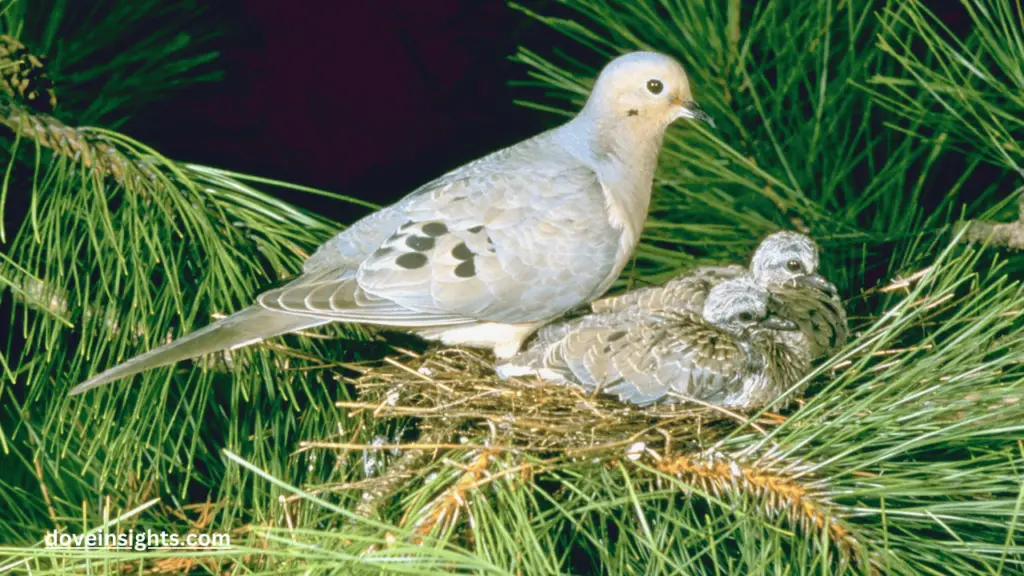
Conservation efforts are crucial in extending the lifespan of turtle doves. Protecting their natural habitats, reducing human-induced threats, and promoting sustainable farming practices are vital to ensuring that these birds can live longer, healthier lives.
One important step in conservation is the protection and restoration of woodlands and farmlands.
Efforts to replant native trees, restore degraded habitats, and reduce deforestation will provide turtle doves with the safe nesting sites they need. Establishing protected areas where turtle doves can thrive without the threat of hunting or habitat destruction is another effective way to boost their chances of survival.
Farmers can also contribute to conservation by using fewer pesticides and promoting wildlife-friendly practices.
For example, creating buffer zones around farmlands and planting crops that provide natural food sources for doves can help support their populations.
Moreover, legislation protecting turtle doves from hunting and illegal trapping is essential. Stricter regulations and enforcement of wildlife protection laws can help reduce the impact of human activities on these birds and allow them to live longer.
Through these efforts, turtle doves can enjoy a better quality of life, resulting in longer lifespans and more successful reproductive cycles.
Conclusion:
The lifespan of turtle doves varies depending on a range of factors, including predation, food availability, habitat quality, and human influence.
While these birds typically live 1 to 3 years in the wild, those that survive their early years can live up to 5 years or longer. Understanding the factors that influence their longevity is crucial for conservation and ensuring their survival in the face of growing environmental challenges.
Human activities have a significant impact on the lifespan of turtle doves, from habitat destruction to hunting and pollution.
However, with targeted conservation efforts, such as habitat restoration and sustainable farming practices, we can help ensure that turtle doves continue to thrive for generations to come.
The fate of turtle doves is in our hands. By becoming more aware of the challenges they face and taking action to protect them, we can help these beautiful birds live longer, healthier lives.
FAQ’s
How long do turtle doves live in the wild?
Turtle doves typically live between 1 to 3 years in the wild, though some can live up to 5 years with favorable conditions.
What factors influence the lifespan of turtle doves?
Predation, food availability, habitat quality, and human-induced threats all play a role in determining the lifespan of turtle doves.
Do turtle doves face predation threats?
Yes, turtle doves are vulnerable to predators such as hawks, foxes, and raccoons, especially in their early life stages.
How do human activities impact turtle doves?
Habitat destruction, pesticide use, and hunting contribute to the decline of turtle dove populations and reduce their lifespan.
Can turtle doves live longer in protected areas?
Yes, turtle doves can live longer in protected areas where they are safe from hunting and habitat destruction.
How does food availability affect the lifespan of turtle doves?
Scarcity of food can lead to malnutrition, weakened immune systems, and reduced survival rates.

